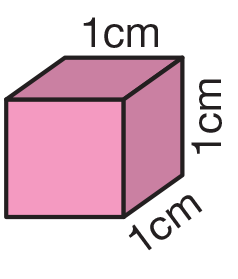Students work with a partner to build cube models based on three-dimensional drawings. Students explore strategies, including skip counting and repeated addition, for finding the volume of cube models.
Content in this Lesson
- Grouping and counting objects.
- Developing visualization and spatial reasoning skills [E6].
- Measuring and estimating volume by building models and counting cubic
units [E3]. - Solving problems involving volume using repeated addition and skip
counting [E1]. - Representing the volume of an object using symbols, connecting cubes, and number sentences [E2].
- Constructing a cube model from a drawing [E3].
- Connecting different representations of shapes (three-dimensional drawings and cube models).
- Showing one’s work [MPE5].
- Using labels [MPE6].
Assessment in this Lesson
| Assessment | Expectation Assessed | Math Practices Expectation Assessed |
|---|---|---|
|
TIMS Radio Tower Student Activity Book Pages 439–440 |
|
|

















